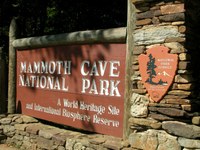The Mammoth Cave System: the World's Most Extensive Known Cave
ABSTRACT: The Mammoth Cave System: the World's Most Extensive Known Cave
Chris Groves, PhD - Crawford Hydrology Laboratory - Western Kentucky University
The Mammoth Cave System in southcentral Kentucky, USA, is the world’s longest known cave. The area above the cave was designated as a national park in 1941 that has since been codified as globally significant by UNESCO as both a World Heritage Site and an International Biosphere Reserve, although continued exploration has shown that the cave extends far beyond the boundaries of the national park. About 20 km of passages are developed for tourists.
Mammoth Cave was known to Native Americans as early as 5,500 years ago, and within another thousand years they were adept at exploring deep into the cave as much as 5-6 km from the nearest entrances. No other cave in the world shows such deep ancient exploration and use. These expeditions took place for ritual purposes and mineral mining, and perhaps early on motivated by the same urge for discovery that drives explorers today. Many samples of preserved human feces from these explorers have been dated and examined for diet and have provided the best detail for dating the establishment of domesticated agriculture—considered the most fundamental reorganization of human society following the evolution of biologically modern humans—ever found in the Americas
With a current mapped length of more than 660 kilometers, and another 300+ km of nearby passages in other caves, Mammoth Cave is still being explored during monthly expeditions by the Cave Research Foundation in collaboration with the National Park Service. Fundamental karst science in hydrogeology, geomorphology, ecology, and other areas has been developed here.
Even with the great length, the cave is contained within only about 120 m of nearly horizontal, lower Carboniferous limestone that outcrops over a recharge area of several hundred km2. Unfortunately, much of this area is outside of the land use protection of the national park and some portion of water entering the cave’s largest underground rivers is impacted by agricultural land-use.











